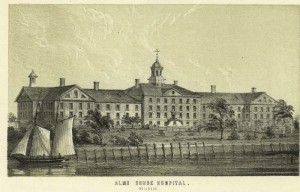

The white paper and its recommendations for a standardized emergency response gave way to National Highway Safety Act of 1966 that established the Department of Transportation (DOT). Reforms were indicated in the education and training, systems design, staffing, and response in the nation’s ambulance services. This “neglected disease of modern society”2 was detailed in the infamous 1966 white paper titled “Accidental Death and Disability: The Neglected Disease of Modern Society.” The paper, prepared by the National Academy of Sciences and the President's Commission on Highway Safety, detailed the injury epidemic and the lack of appropriate pre-hospital care and lack of an organized system to treat patients suffering from critical traumatic injuries. The 1960’s provided another challenge to public health as traffic accidents began to lead to considerable trauma and death. Departments trained in cardiac resuscitation began to reveal successes in major urban areas such as Columbus, Los Angeles, Seattle and Miami. Landmark articles in the late 50’s and early 60’s began to detail the science and methods for initial cardiopulmonary resuscitation (CPR), forging yet another vital link in the chain as EMS began its first steps into the treatment of pre-hospital cardiac patients. Control began to shift towards municipal hospitals or fire departments as funeral home hearses were slowly joined by fire departments, rescue squads and private ambulances in the transportation of the ill and injured. In the wake of World War I, the roaring 20s saw the first volunteer rescue squads forming in locations such as Virginia and New Jersey. Once again, military conflicts and necessity provided much of the impetus to develop innovations in the transportation and treatment of injured. The New York service differed slightly from the modern approach as they arrived equipped with a quart of emergency brandy for each patient. It wasn’t until 1865, however, that the first civilian ambulance was put into service in Cincinnati followed by a civilian Ambulance Surgeon in New York four years later1. With widespread trauma, a systematic and organized method of field care and transport of the injured was born out of necessity. Like most hierarchies, the system we have in place today was forged one link at time, dating as far back as the Civil War. Pre-hospital emergency care in the modern age is often described as a “hierarchy” of human and physical resources utilized in the acute setting to provide the best possible patient care until definitive care can be established.

Joshua Bucher, M.D., Department of Emergency Medicine, UMDNJ-Robert Wood Johnson Medical School


 0 kommentar(er)
0 kommentar(er)
